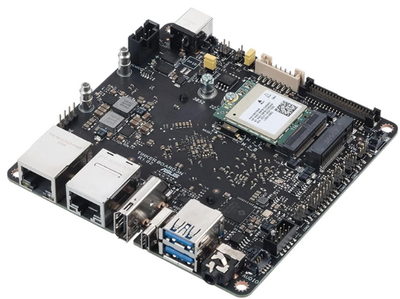Asus Tinker Board 3N Plus and the Asus Tinker Board 3N Lite maintain the original model's dimensions and form factor but differ significantly in their input/output (I/O) options.
Asus Tinker Board 3N Series Differences:
- The Tinker Board 3N Lite has pared-down expansion capabilities, omitting features like the M.2 B Key connector that supports PCIe 3.0 SSDs or wireless modules. In contrast, the Tinker Board 3N Plus is built for tougher conditions, boasting a design that withstands more extreme temperatures.
- While the Lite version comes with a single Gigabit Ethernet port, the Plus model and its counterparts feature dual Ethernet ports.
- Pricing varies, with models listed on Amazon ranging from approximately $170 to $279. Currently, some higher-end configurations benefit from a 10% discount, making the price gap between the Tinker Board 3N and 3N Lite quite minimal.
- Although some models may be found at lower prices on Rutronik24, the Tinker Board 3N Plus is notably backordered there.
Specifications Breakdown for the Tinker Board 3N Series:
- Processor: Each board is powered by a Rockchip RK3568 processor, which includes four ARM Cortex-A55 CPU cores running at 2 GHz, ARM Mali-G52 graphics, and a Neural Processing Unit (NPU) for AI tasks.
- Memory: Options range from 2GB to 8GB of dual-channel LPDDR4x RAM, depending on the model.
- Storage: Choices include none, 32GB, or 64GB of eMMC storage, along with a microSD card reader for additional storage options. The 3N Plus also features 16MB SPI Flash and an M.2 slot for expansion.
- Connectivity: USB options include USB 3.2 Gen 1 Type-C and Type-A ports, with additional USB 2.0 pin headers. Wireless capabilities vary, with support for WiFi 5 or 6 and Bluetooth, depending on the model.
- Audio and Video: Support includes HDMI, LCD, eDP outputs, and audio connections, accommodating a wide range of multimedia applications.
- Ethernet: The Lite model has one Gigabit Ethernet port, while others offer two, with the Plus model supporting 25W Power over Ethernet (PoE) with an additional module.
- Internal Headers and Ports: Each board features a variety of headers for LCDs, GPIOs, and other functionalities, catering to custom project needs.
- Power: Power input options include a DC jack and a 4-pin power header.
- OS Support: The boards support Debian 11, Android 12, and Yocto, providing flexibility for various software projects.
- Physical Dimensions: All boards measure 100 x 100mm, ensuring compatibility with a wide range of enclosures.
- Operating Temperatures: The Lite model operates within a 0℃ to 60℃ range, while the Plus model can handle -40℃ to 85℃, suitable for more demanding environments.
Asus Expands Tinker Board 3N Series with 3N Plus and 3N Lite Variants (linuxgizmos.com)


